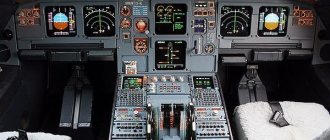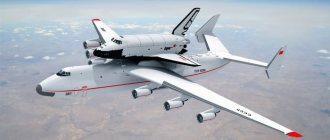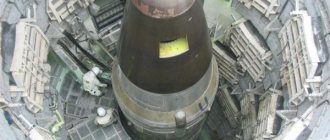The history of the Il 96 aircraft
With the growth of passenger traffic in the late 80s, the need for a new wide-body aircraft increased.
Airplane Il 96
By the end of the first half of the 70s, long-distance flights were operated on Il-62 , but the increased flow of passengers forced an increase in the number of flights, the load on airports increased, and it became obvious that the Il-62, as a long-haul aircraft, could not cope with the difficulties that arose. And the comfort on the Ilyushin is far from the same as that offered by the world’s first wide-body aircraft, the Boeing 747, which was in operation since the end of 1969.
The new car was created on the basis of the Il-86 , which retained the same passenger capacity and flight range of 9 thousand km. The aircraft, designated Il-86D , had its wing area increased and equipped with NK-56 , which were later abandoned in favor of Perm PS-90 . Therefore, the designer of the car, Novozhilov, reduced the length of the fuselage, reduced the number of passenger seats and made the wing area somewhat smaller.
Il 96 300 takeoff Aeroflot
The plane, named Il-96-300 , took off for the first time on September 28, 1988 under the leadership of the crew commander, Hero of the Soviet Union S. Bliznyuk. This machine flew across the North Pole to Portland in 15 hours and made a non-stop flight Moscow - Petropavlovsk-Kamchatsky - Moscow, covering 14,800 km.
Modifications
| Model | Distinctive features |
| Il-96-300PU/PU(M1) “Air Force No. 1” - the plane of the President of the Russian Federation | Special aircraft of the Rossiya air squad to serve the President of the Russian Federation. Five aircraft of this modification were assembled (in 1995, 2003, 2012, 2013 and 2020). The interior trim and special interior layout differ significantly from the base model 96-300. The finishing of the interior of the latest modification PU (M1) was carried out by the British company Diamond Aircraft. The aircraft is equipped with specialized closed communication equipment and an operational control center for state security forces |
| Il-96-400 Airplane Il-96-400 | Redesigned from the Il-96M modification. The fuselage is longer than that of the base 96-300.
|
| Il-96-400T Tests of IL-96-400T | Cargo modification 96-400. The first side was assembled by converting from an Il-96T. The remaining three sides were assembled from scratch. A set of tests has been fully completed on another vehicle. Conversion is being carried out into a special board of the FSB of the Russian Federation (mobile control post) under the marking Il-96-400VPU:
|
| Il-96-400TZ Promising army tanker 96-400ТЗ | The RF Ministry of Defense plans include re-equipment and trial testing of two 96-400T aircraft in the TZ modification. The planes are planned to be used as fuel tankers.
For comparison, the main tanker of the Russian Aerospace Forces Il-78M delivers 40 tons of kerosene when refueling |
| Il-96VKP Military command post based on Il-96 | Mobile command post for strategic management of the third generation. Currently in the design stage. To replace a similar special aircraft Il-86VKP, the United Instrument-Making Corporation of the Russian Federation is developing an instrument complex |
| Il-96M, Il-96MD Russian giant Il-96M | Modification of the production aircraft Il-96-300:
The non-stop flight range was 12,800 km |
| Il-96T Cargo IL-96-400T | Russian-American cargo modification of the Il-96-300 model. The fuselage of the aircraft with a diameter of 6.08 m is divided into two decks.
A personnel compartment is equipped, isolated from the cockpit by a barrier and a smoke canopy |
Description of the Il 96 aircraft
Although the IL-96 is similar in appearance to the progenitor of the IL-86 , the differences are still noticeable. It has a low-lying supercritical wing with a span of 60.1 m2 and reduced sweep. At the ends of the planes there are winglets that reduce inductive reactance.
The T-shaped tail was abandoned on the wide-body aircraft, but to improve directional stability in the event of engine failure, the fin height was increased by one and a half meters. The wing is equipped with mechanization; there are slats in front along the entire tip, and double-slit flaps at the rear. These devices create the necessary lift at high angles of attack without disrupting the air flow.
Cabin Il 96
The airframe uses new composite materials, which reduce the weight of the structure and extend its service life. The chassis of the vehicle is designed according to a three-wheel design: the main struts have four-wheel brakes, the nose two-wheel strut does not have brakes.
The IL-96 is equipped with four PS-90A engines with a takeoff thrust of 16 thousand kg each. The power plants are located on underwing pylons, two on each side of the fuselage. A special feature of the engines is the “Diagnoz-90” electronic control system, which allows you to control the operating parameters of the power plant, fuel consumption and prevent the occurrence of surge.
Thanks to the flight navigation system and the electronic flight control system VSUP-85-4, the IL-96 crew consists of three people (without a navigator). In the cockpit there are displays that display information about flight parameters and navigation conditions; on the central panel there are two more displays indicating the operating parameters of the power plants. The aircraft is controlled by fly-by-wire, three-channel.
Unlike the Il-86 , the new aircraft has fuel tanks with twice the capacity: four tanks in each console and one inside the fuselage. The air conditioning system is automatic, supplying each passenger with 25.7 kg/hour.
The wing and tail are equipped with an electric pulse anti-icing system that protects their leading edges. The engine air intakes are heated by hot air from the compressor chamber.
Salon Il 96
The comfortable passenger cabin accommodates 300 people, but for a two-class configuration the capacity is 235 passengers. The lower deck is divided into three compartments for luggage and cargo.
Flight characteristics of Il 96 400
The deep modernization of the Ilyushin was the Il-96-400 , below are the characteristics for this modification:
- Wing span – 60.1 m.
- Wing area – 391.6 m2.
- The length of the aircraft is 63,961 m.
- Maximum take-off weight – 265 tons.
- The total payload weight is 58 tons.
- Flight range – 10 thousand km.
- Cruising speed – 870 km/h.
- Cruising echelon – 12 thousand m.
- Number of passengers – 436 people.
- Power plants – PS-90A1.
- Crew members – 3 people.
Exploitation
The aircraft has been produced since 1992 at the Voronezh Aviation Plant. Since 1988, 23 aircraft of this type have been built. As of August 2009, 16 aircraft are in operation (13 in Russia). Of these, 6 Aeroflot airliners are used for passenger transportation.
According to the decision of the Ministry of Civil Aviation of the USSR, adopted at a board meeting on January 26, 1989, the first Il-96 aircraft were planned to be transferred to the TsUMVS (Central Directorate of International Air Services) of Aeroflot, then to the Domodedovo air squad. Retraining of the flight personnel took place at the Ilyushin Design Bureau. The first flight squad was organized on August 6, 1991. In 1992, several technical flights were carried out from Moscow to Petropavlovsk-Kamchatsky and Yuzhno-Sakhalinsk.
Commercial operation of the aircraft began on July 14, 1993 on the Moscow-New York route. At first, the aircraft was used mainly on foreign flights: to Singapore, Las Palmas, New York, Tel Aviv, Palma de Mallorca, Tokyo, Bangkok, Los Angeles, San Francisco, Seattle, Rio de Janeiro, Buenos Aires, Seoul, Sao Paulo, Havana, Hanoi, Santiago, Lima. All Il-96 aircraft currently flying at Aeroflot were assembled in the first half of the 1990s. In exchange for reducing duties on the import of foreign equipment, Aeroflot undertook to purchase an additional batch of Il-96s, but the deal never took place, although duties were reduced.
Two aircraft were built to serve the President of the Russian Federation (modification Il-96-300PU, b/n RA-96012, RA-96016).
In 2005-2006, three Il-96-300s were delivered to Cuba, including one to serve the President of Cuba. In 2009, the Venezuelan government entered into a contract for the supply of two Il-96-300s - one for passenger transport, the other for VIP transport.
In the fall of 2008, the IFC leasing corporation seized two Il-96-300s from Krasnoyarsk Airlines due to the company's insolvency. The aircraft are currently in storage. In the history of Russian aviation, this was the first time that an airline had airplanes. It is these two Il-96-300s that are being considered for transfer to Venezuela.
In 2009, Polet Airlines began operating Il-96-400T cargo aircraft, which Aeroflot initially planned to buy, but later abandoned them. As of September 2009, Polet airline has three Il-96-400T aircraft with a plan to receive three more aircraft in 2010. Also, during the MAKS-2009 aerospace salon, an agreement was signed with a Peruvian airline for the supply of two Il-96-400T freighters with an option for another such aircraft, and negotiations are underway on its delivery to China and the countries of the Middle East. The current version of the aircraft is equipped with new engines and the most modern Russian-made flight and navigation system, which allows the aircraft to be operated without any restrictions around the world. Such aircraft have not yet been produced in Russia. Il-96-400T can transport up to 92 tons of cargo on medium and long-distance routes. The aircraft is certified in accordance with Russian airworthiness standards, harmonized with the standards of the European Union and the USA.
At various times, negotiations were held on the sale of Il-96 to China (three aircraft), Syria (three aircraft) and even Zimbabwe. In 2007, KrasAir airline planned to transfer two of its Il-96s to Iran Air on a “wet lease” for a year.
The first two prototypes (nos. 96000 and 96001), stored for a long time at the Gromov Flight Research Institute in Ramenskoye, were destroyed in May 2009. Another 5 aircraft (2 KrasAir and 3 Domodedovo Airlines) are temporarily taken out of service and are in storage.
In 2009, Minister of Industry and Trade Viktor Khristenko decided to discontinue production of the Il-96-300 passenger aircraft in the coming years, since the airliner is not able to compete with the latest long-haul passenger aircraft from Boeing and Airbus. The creators of the Il-96-300 were guided by the economic performance of the Boeing 767, however, since the first flight of the Il-96-300, new-generation long-haul airliners Boeing 777, Airbus A330, Airbus A340, Airbus A380 have been put into operation, and the Boeing 787 and Airbus A380 are expected to enter the market soon. Airbus A350. By 2012, two more Il-96-300 will be produced for the Rossiya SLO (including the presidential Il-96-300PU). The cargo version of the Il-96-400T aircraft remains in production.
| Operator | Modification | Quantity |
| They fly | ||
| Aeroflot | Il-96-300 | 6 |
| Cubana de Aviacion | Il-96-300 | 3 |
| Aerostarz | Il-96-300 | 1 |
| Special flight squad "Russia" | Il-96-300 Il-96-300PU | 3 2 |
| Flight | Il-96-400T | 3 |
| In storage | ||
| Domodedovo Airlines | Il-96-300 | 3 |
| Krasnoyarsk Airlines | Il-96-300 | 1 |
| Dismantled for scrap | ||
| KB Ilyushin | Il-96-300 Il-96-400M/T | 1 1 |
| Under construction | ||
| Special flight squad "Russia" | Il-96-300PU | 2 |
| Flight | Il-96-400T | 3 |
Interesting facts from the operation of the Il 96 aircraft
- Il-96 is the only aircraft with a wide fuselage created in the USSR.
- In the history of operation of the Il-96, there have been no flight accidents associated with the loss of life - it is a reliable wide-body airliner.
- One of the modifications of this aircraft is the Il-96-300PU, which serves as an air control center for the President of the Russian Federation.
- Many IL-96 aircraft received their own names in honor of famous pilots and cosmonauts.
- In the history of operation of the Il-96, only once was there a flight ban due to a manufacturing defect in the landing gear of the presidential aircraft. The ban lasted 42 days - Aeroflot suffered significant losses as a result of this precedent.
- The area of the tennis court is one and a half times smaller than the area of the IL-96 wing.











